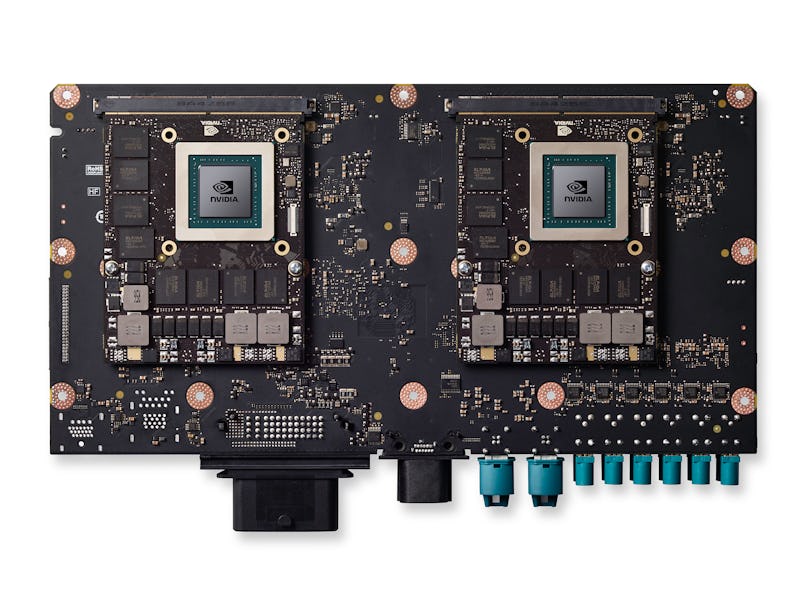Nvidia isn’t pulling any punches with its new super-fast processing chips — which is good, because the little devices will soon be powering self-driving cars.
The company unveiled its Parker system-on-a-chip (SoC) Monday at California’s Hot Chips conference, and boy, is it a beast. The Parker SoC has up to 1.5 teraflops of computing power, and all of that muscle will go towards helping a car drive itself using powerful learning algorithms.
Parker boasts up to 100 percent better multi-core performance than competitors, thanks to its four ARM Cortex CPUs paired with two Denver 2.0 CPU cores. On top of that, there’s a 256-bit Pascal GPU able to power both dashboard information and in-car entertainment systems. The GPU also enables Parker to undertake deep learning wizardry inside the car for self-driving calculations.
The company had previously revealed the Drive PX 2 platform at the Consumer Electronics Show (CES). That platform uses two Parker processors, and one of the first cars to use the platform will be the Volvo XC90. The car maker will be testing PX 2-powered XC90s in 2017.
Nvidia has been slowly upping its self-driving game in recent months. The graphics card maker has a self-driving project, known as DAVE2, that uses a Drive PX computer to travel the streets of New Jersey back in May. That same month, the company took to the tracks as part of a driverless car racing weekend held by Silicon Valley entrepreneur Joshua Schachter. As driverless cars depend on crunching large amounts of data, it makes sense that a company with experience of doing just that is moving into the nascent sector.
